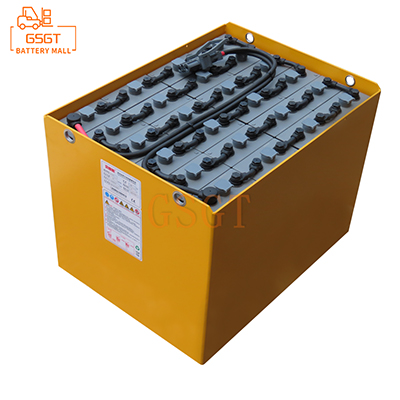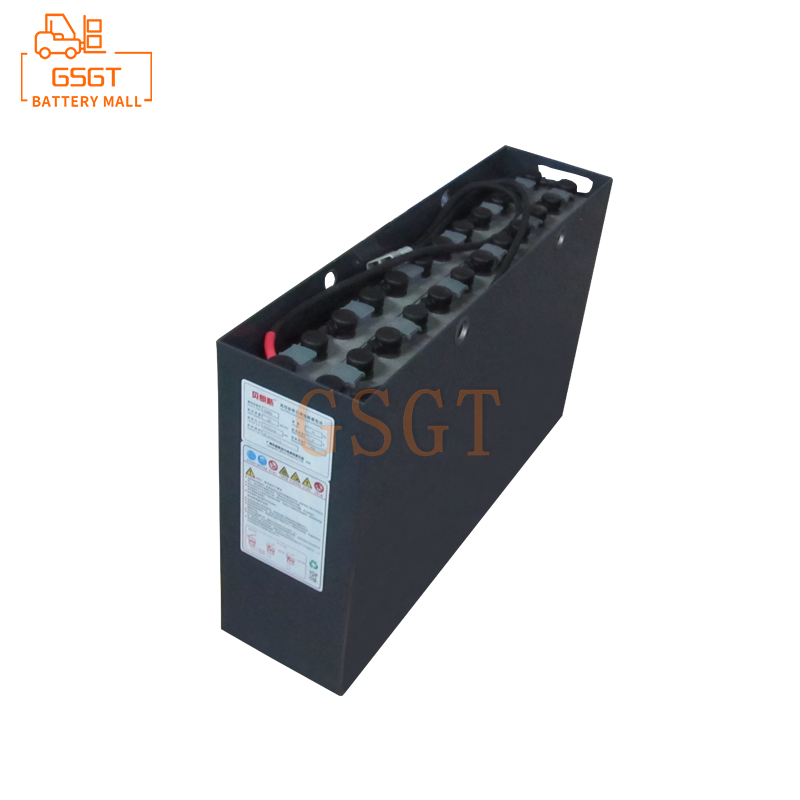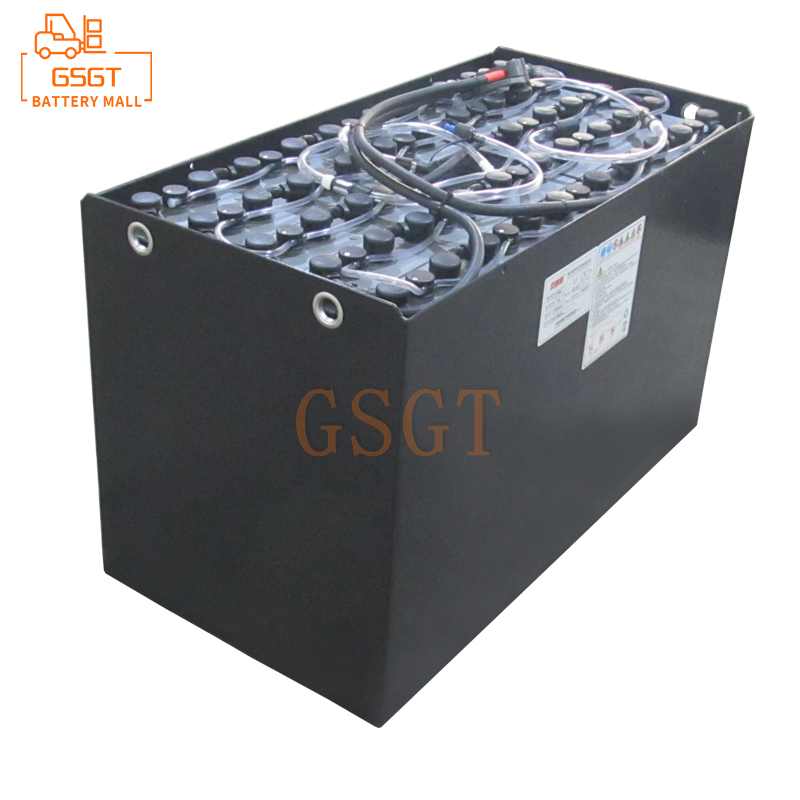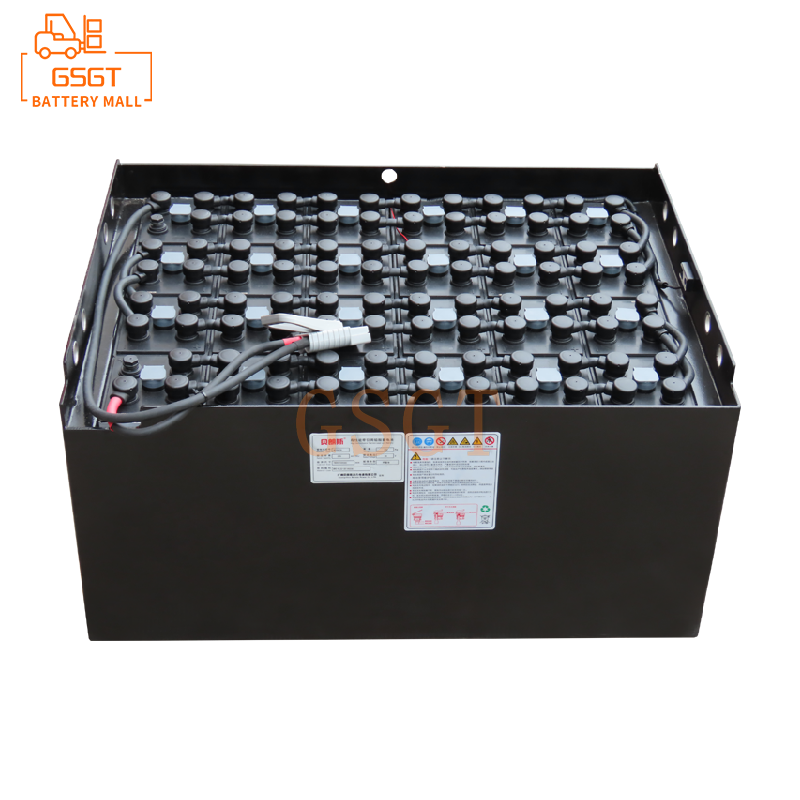Time:2025-06-10 10:18:17
Browse:601
Introduction
In the field of industrial logistics, forklifts, as important handling equipment, are mostly powered by lead-acid batteries. Lead-acid batteries have advantages such as low cost, mature technology and good high-rate discharge performance, and thus are widely used. As the "energy replenishment station" of lead-acid batteries, the performance and type of the charger have a crucial impact on the service life of the battery. Choosing the right charger not only ensures the efficient operation of forklifts but also significantly reduces usage costs and enhances economic benefits.
Failure factors of lead-acid batteries in forklifts
Failure factors
Plate sulfation: If the battery is in a state of undercharging for a long time or not charged in time after discharge, insoluble lead sulfate crystals will form inside the battery, adhering to the surface of the plates and hindering the progress of electrochemical reactions, resulting in a decrease in battery capacity.
Water loss: Overcharging or excessive charging current can cause the water in the electrolyte to decompose into hydrogen and oxygen and escape, resulting in the electrolyte drying up, increased internal resistance of the battery, and a decline in performance.
Plate corrosion: During the charging process, lead dioxide on the positive plate undergoes a chemical reaction with sulfuric acid, leading to plate corrosion. If the charging voltage is too high or the charging time is too long, it will accelerate the corrosion rate of the plates and shorten the battery life.
Thermal runaway: When the heat generated by the battery during the charging process cannot be dissipated in time, the battery temperature will continue to rise, further intensifying the chemical reaction and forming a vicious cycle, eventually leading to thermal runaway of the battery and damaging it.
Common types of chargers and their working principles
Power frequency charger
Working principle: A power frequency charger typically uses a transformer to reduce high-voltage alternating current to low-voltage alternating current, and then converts it back to direct current through a rectifier circuit to charge the battery. Common types of power frequency chargers include magnetic saturation transformer type and thyristor SCR phase-controlled rectifier type. The magnetic saturation transformer charger takes advantage of the characteristics of the magnetic saturation transformer to achieve functions such as AC voltage stabilization, anti-interference, and voltage transformation. The thyristor SCR phase-controlled rectifier charger regulates the output voltage and current by controlling the conduction Angle of the thyristor.
Features: Relatively simple structure, strong load capacity, high reliability, and easy to maintain. However, it has a large volume and weight, high internal consumption, and relatively low charging efficiency.
High-frequency charger
Working principle: The high-frequency charger adopts high-frequency switching power supply technology. It first converts industrial frequency AC power into DC power through a rectifier circuit, then converts DC power into high-frequency AC power through a high-frequency switching circuit, and after being stepped down by a high-frequency transformer, it is rectified back into DC power to charge the battery. Its frequency can usually reach more than megaHz.
Features: It has the advantages of small size, light weight and high efficiency, and can charge the battery quickly. However, due to its high operating frequency and high requirements for electronic components, it is prone to interference when the shielding is poor, and its stability is relatively weak.
Intelligent charger
Working principle: The smart charger is equipped with an intelligent control system that can monitor parameters such as battery voltage, current and temperature in real time, and automatically adjust the charging strategy based on these parameters. For instance, when the battery power is low, a large current is used for fast charging. When the battery is nearly fully charged, the charging current is gradually reduced to prevent overcharging.
Features: It can effectively prevent overcharging and undercharging, and maximize the battery life. It has adaptive capabilities and can optimize charging based on the characteristics of different batteries, but the technology is relatively complex and the cost is high.
Pulse charger
Working principle: The pulse charger outputs intermittent pulse current to the battery for charging. During the charging process, by periodically changing the magnitude and direction of the current, and taking advantage of the instantaneous high voltage and large current of the pulse, the lead sulfate crystals on the surface of the plates are broken, reducing the sulfation of the plates.
Features: It can effectively improve the battery's charging acceptance capacity, reduce battery water loss and plate sulfation, and extend battery life. However, the charging equipment is relatively complex, costly, and has strict control requirements for charging parameters
The influence of different types of chargers on the lifespan of lead-acid batteries in forklifts
The influence of power frequency chargers on battery life
Advantages: Due to its adoption of a three-stage charging mode, the charging process is relatively smooth, causing less impact on the battery. It can to a certain extent prevent overcharging and undercharging of the battery, which is conducive to extending the battery life. For example, during the constant current charging stage, the battery is charged with a constant current to steadily increase the battery's power. During the constant voltage charging stage, as the battery power approaches saturation, the charging current gradually decreases to prevent overcharging of the battery. During the float charging stage, the battery power is maintained at a relatively low voltage to keep the battery active.
Disadvantage: However, the charging speed of the power frequency charger is relatively slow, and it usually takes 8 to 10 hours to fully charge the battery. For frequently used forklifts, prolonged charging can affect work efficiency. Moreover, due to its heavy weight and high internal consumption, it generates a considerable amount of heat during the charging process. If the heat is not dissipated in time, it may cause the battery temperature to be too high, accelerate water loss and plate aging of the battery, and thus shorten the battery life.
The impact of high-frequency chargers on battery life
Advantages: The high efficiency of the high-frequency charger significantly reduces the charging time, meeting the rapid charging requirements of forklifts and enhancing work efficiency. Meanwhile, due to its adoption of high-frequency switching power supply technology, the battery loses less water during the charging process, which is conducive to maintaining the stability of the electrolyte and has a certain positive impact on the battery life.
Disadvantage: However, the stability of high-frequency chargers is relatively poor, and voltage fluctuations may occur during the charging process. If the voltage fluctuates too much, it may cause the battery to be overcharged or undercharged, damaging the battery. In addition, due to its high operating frequency, it has high requirements for electromagnetic compatibility. If the shielding measures are not in place, it may cause interference to the surrounding electronic devices and may also be subject to external interference, affecting the charging effect and thereby the battery life.
The impact of smart chargers on battery life
Advantages: The smart charger can provide the most suitable charging conditions for the battery by monitoring the battery status in real time and automatically adjusting the charging parameters. For example, when the battery temperature is detected to be too high, the charging current is automatically reduced to prevent the battery from thermal runaway. When the battery power is close to saturation, adjust the charging voltage and current to avoid overcharging. This precise charging control can effectively reduce problems such as sulfation, water loss and corrosion of battery plates, significantly extending battery life.
Disadvantages: The technology of smart chargers is complex and the cost is relatively high. Once a fault occurs, it is difficult to repair. Moreover, it has extremely high precision requirements for sensors and control systems. If there are errors in the sensors or malfunctions in the control system, it may lead to incorrect charging strategies, which instead cause damage to the battery.
The influence of pulse chargers on battery life
Advantages: The pulse current of the pulse charger can effectively break the lead sulfate crystals on the surface of the plates, reduce the sulfation of the plates, and improve the battery's charging acceptance capacity and capacity recovery ability. Periodic pulse charging can make the electrochemical reactions inside the battery more thorough, delay battery aging and extend battery service life.
Disadvantage: The charging equipment of pulse chargers is relatively complex and costly. Moreover, the parameters of the pulses (such as pulse width, pulse frequency, pulse amplitude, etc.) need to be precisely adjusted according to the specific conditions of the battery. If the parameters are not set properly, the expected charging effect may not be achieved, and it may even cause damage to the battery.
Suggestions for choosing the right charger
Select based on the forklift's usage scenario
Frequent usage scenarios: If the forklift is used frequently and has a high requirement for charging speed, high-frequency chargers or intelligent chargers can be given priority. High-frequency chargers can quickly recharge batteries and reduce waiting time. Smart chargers can better protect battery life while providing fast charging.
For forklifts with low usage frequency, a power frequency charger might be a more suitable choice. Its charging process is smooth and causes little damage to the battery. Although the charging speed is slow, it is sufficient to meet the usage requirements and the cost is relatively low.
Consider the battery characteristics and status
New battery: The new lead-acid battery has good internal plates and electrolyte performance. You can choose a charger that can provide stable charging current and voltage, such as a power frequency charger or a smart charger, which helps maintain the initial performance of the battery and extend its service life.
Aging batteries: For batteries that have already shown signs of aging such as plate sulfation and capacity decline, pulse chargers may be more suitable. Its pulsed current can effectively repair the sulfation of the plates, improve the charging acceptance capacity of the battery, and restore the battery capacity to a certain extent.
Comprehensive cost consideration
Equipment cost: The prices of different types of chargers vary. The cost of power frequency chargers is relatively low, followed by high-frequency chargers. Smart chargers and pulse chargers have higher costs. When making a choice, a comprehensive consideration should be made based on the budget.
Usage cost: In addition to the cost of equipment procurement, the energy consumption of the charger, battery replacement cost and other usage costs also need to be taken into consideration. For instance, although high-frequency chargers have a relatively high equipment cost, they have high charging efficiency and low energy consumption. Long-term use can reduce electricity expenses. Although smart chargers can extend battery life and reduce the cost of battery replacement, the equipment is expensive. Therefore, it is necessary to comprehensively assess all costs and select the charger with the best cost performance.
Conclusion
Different types of chargers have varying degrees of impact on the lifespan of lead-acid batteries in forklifts. The power frequency charger charges smoothly but slowly, the high-frequency charger is efficient but has poor stability, the smart charger has precise control but is costly, and the pulse charger can repair the sulfation of the plates but has complex equipment. In practical applications, the appropriate charger should be selected based on factors such as the forklift's usage scenarios, battery characteristics and status, as well as the overall cost, to maximize the lifespan of the forklift's lead-acid battery, enhance the forklift's operational efficiency, and reduce operating costs. Meanwhile, with the continuous advancement of technology, charger technology is also constantly developing. In the future, it is expected that more efficient, intelligent and batter-life-protecting charger products will emerge, providing better support for the development of the forklift industry.

$3405

$1060

$3050

$5710

MESSAGE
Professional And Efficient
Security
Affordable Price
Professional Services